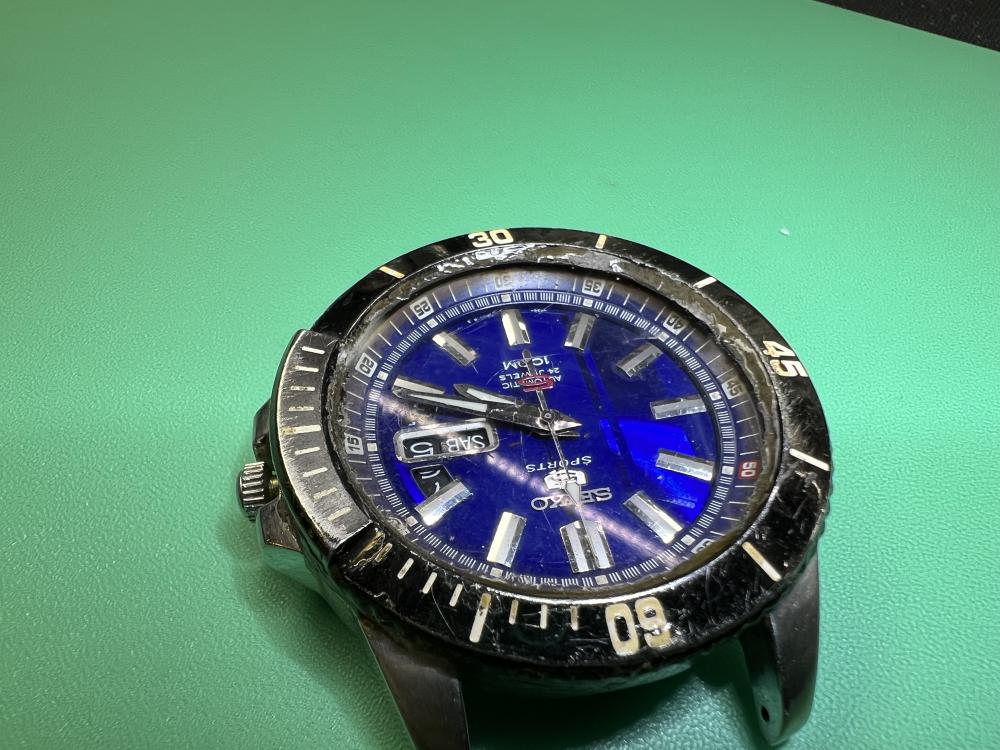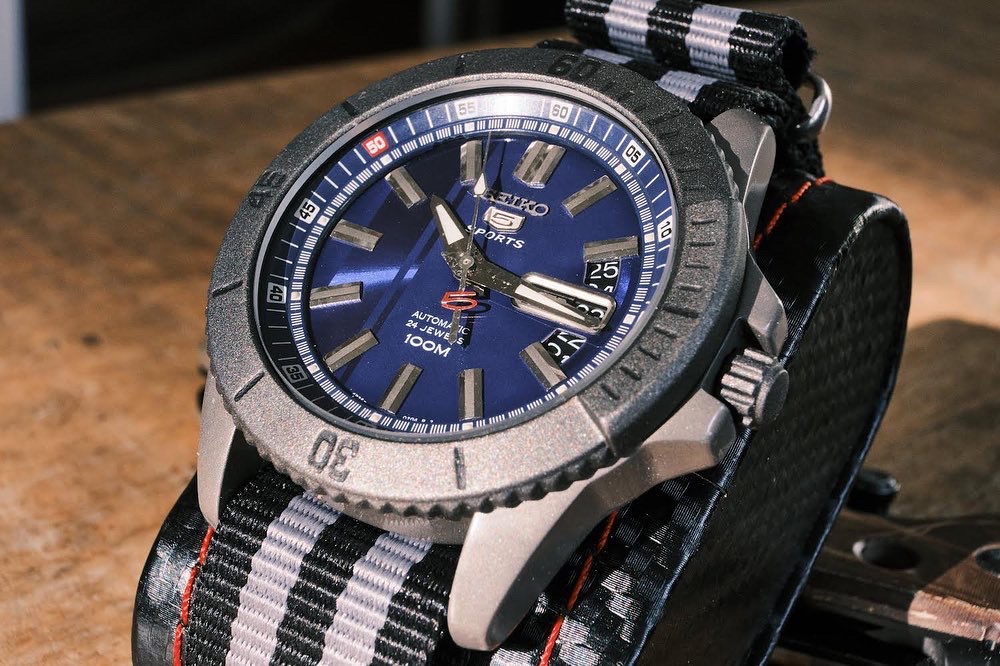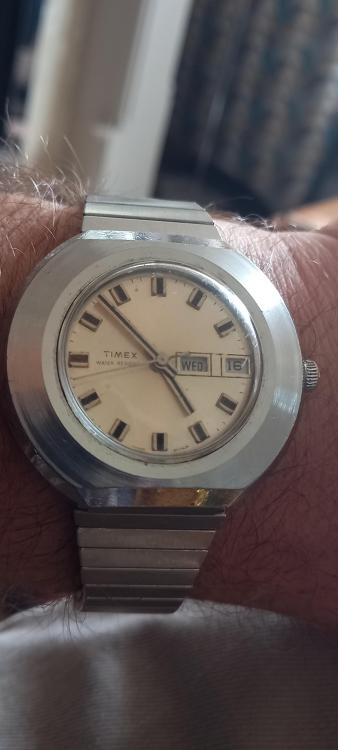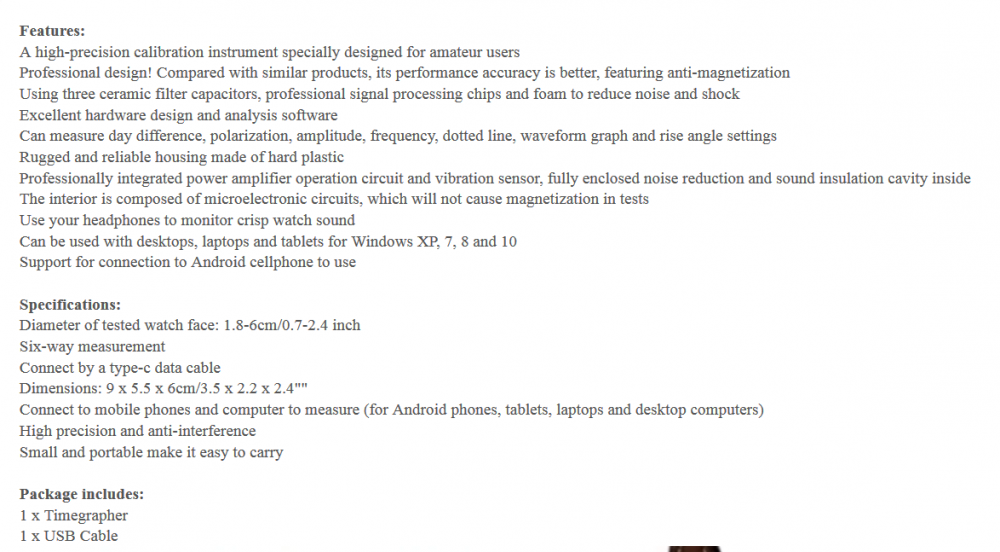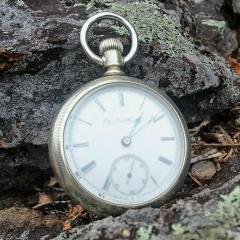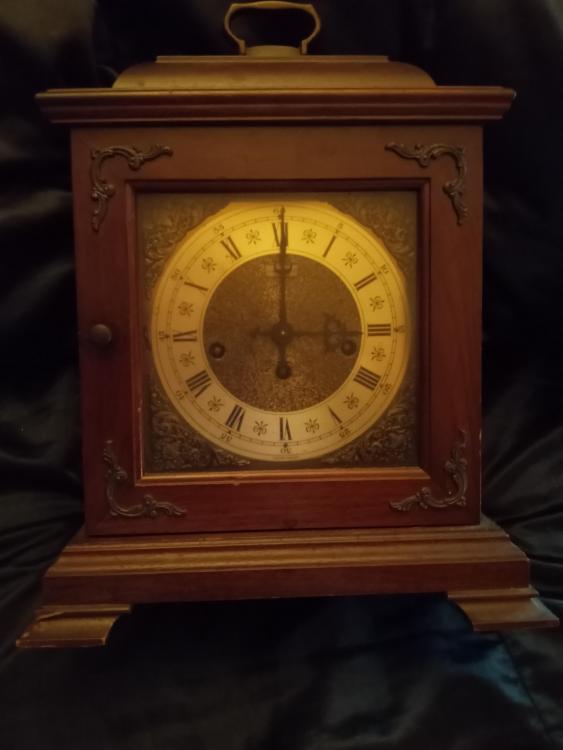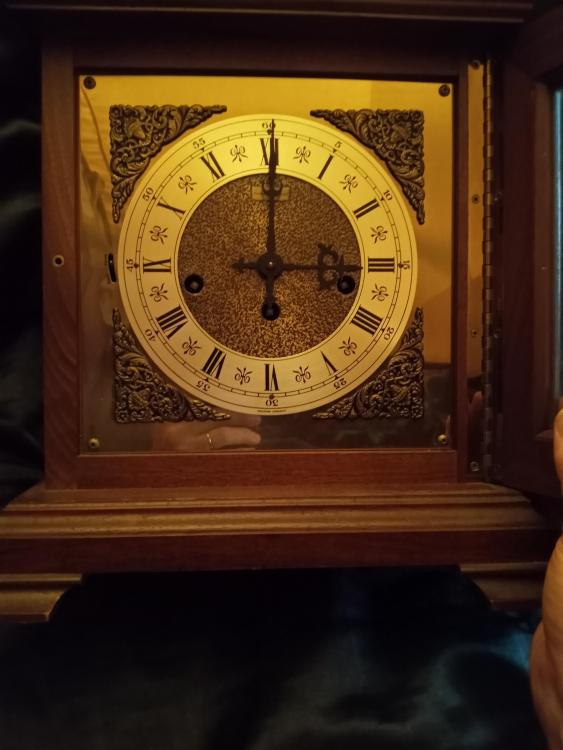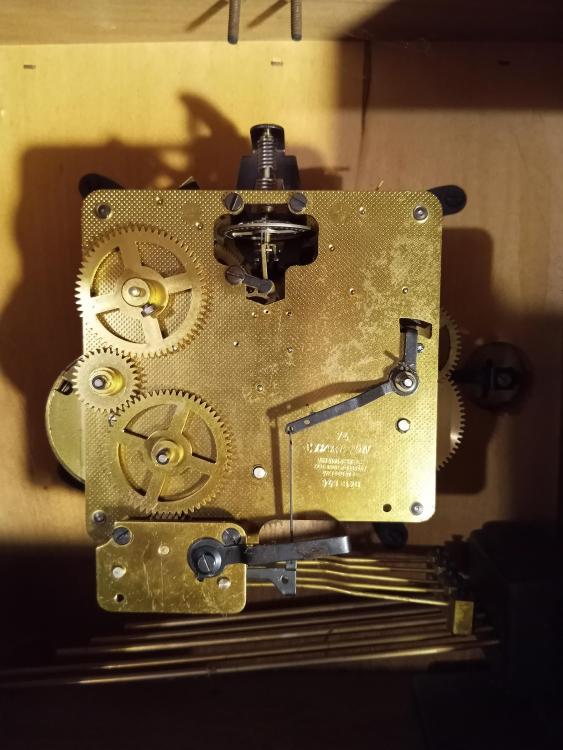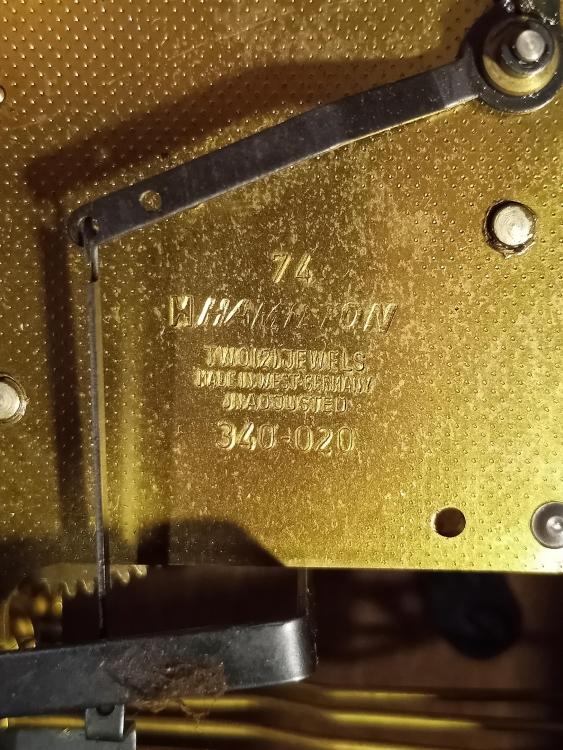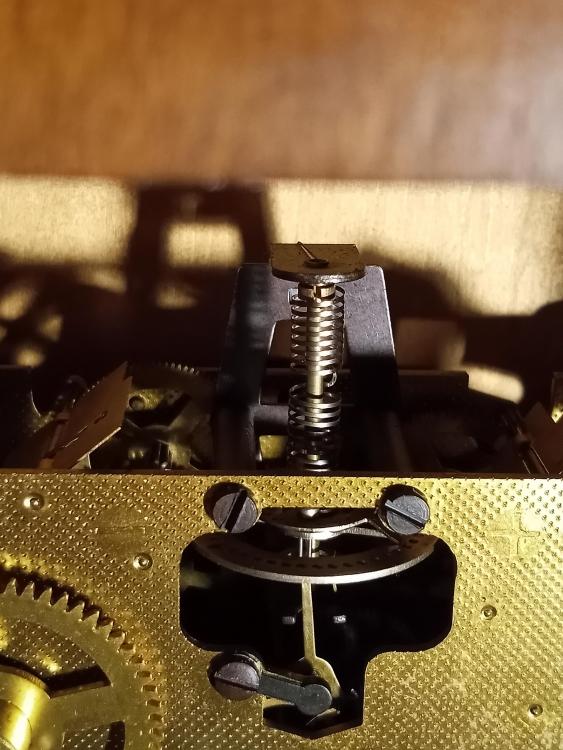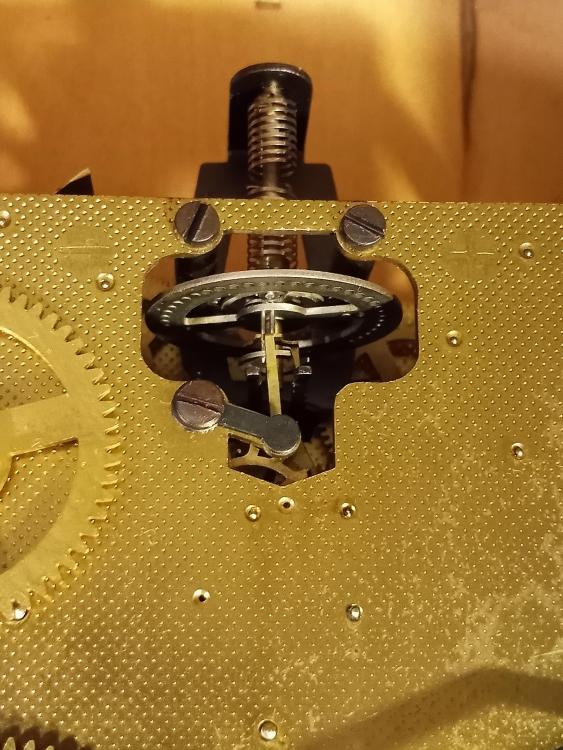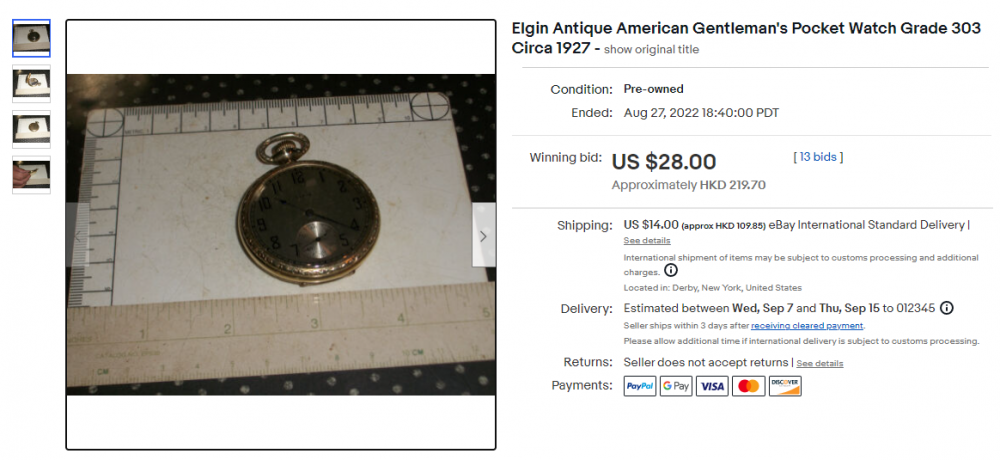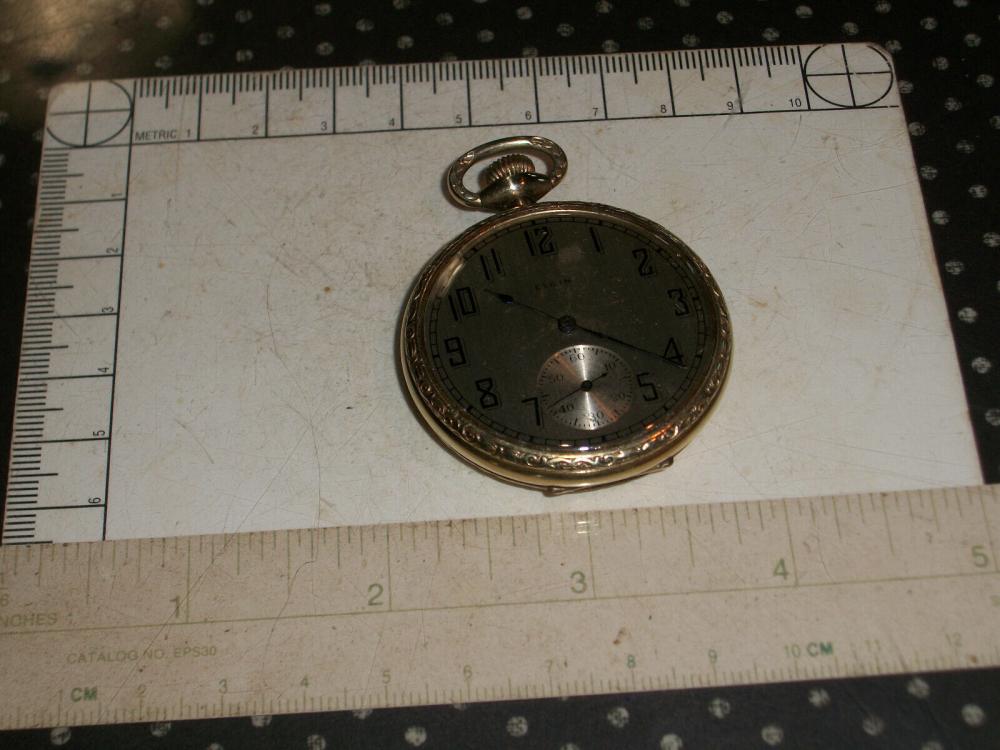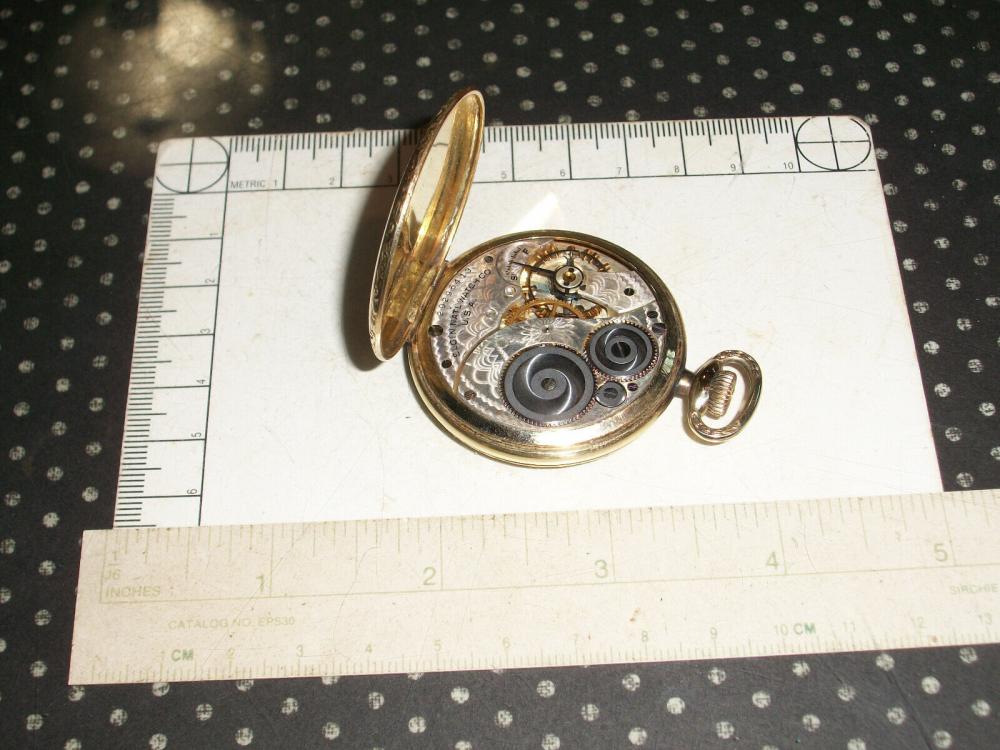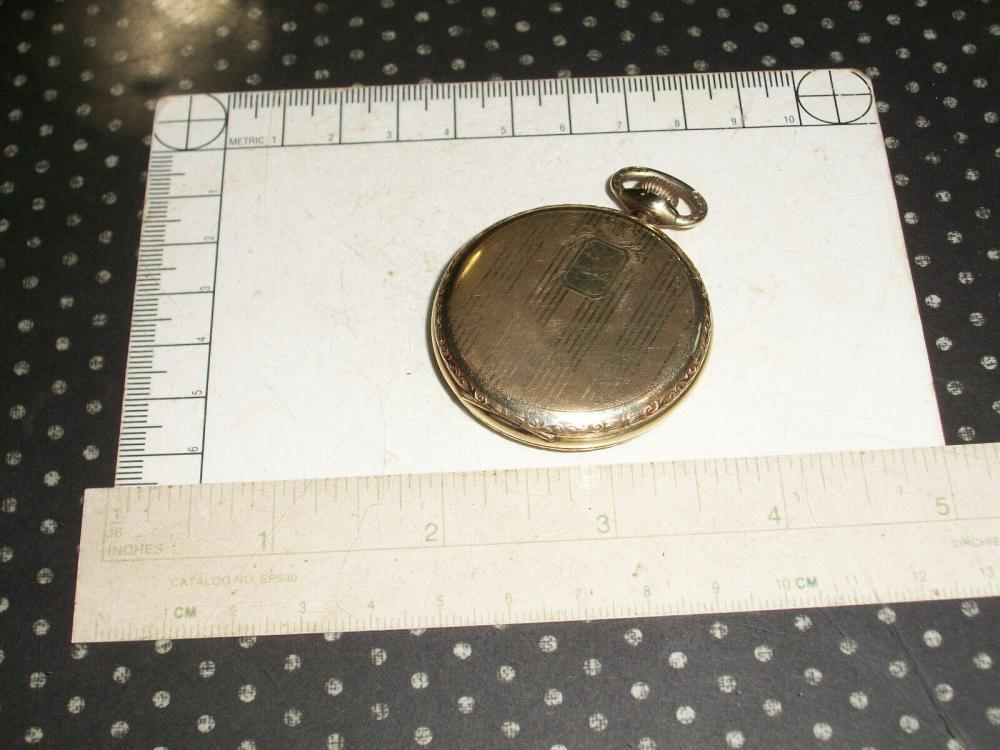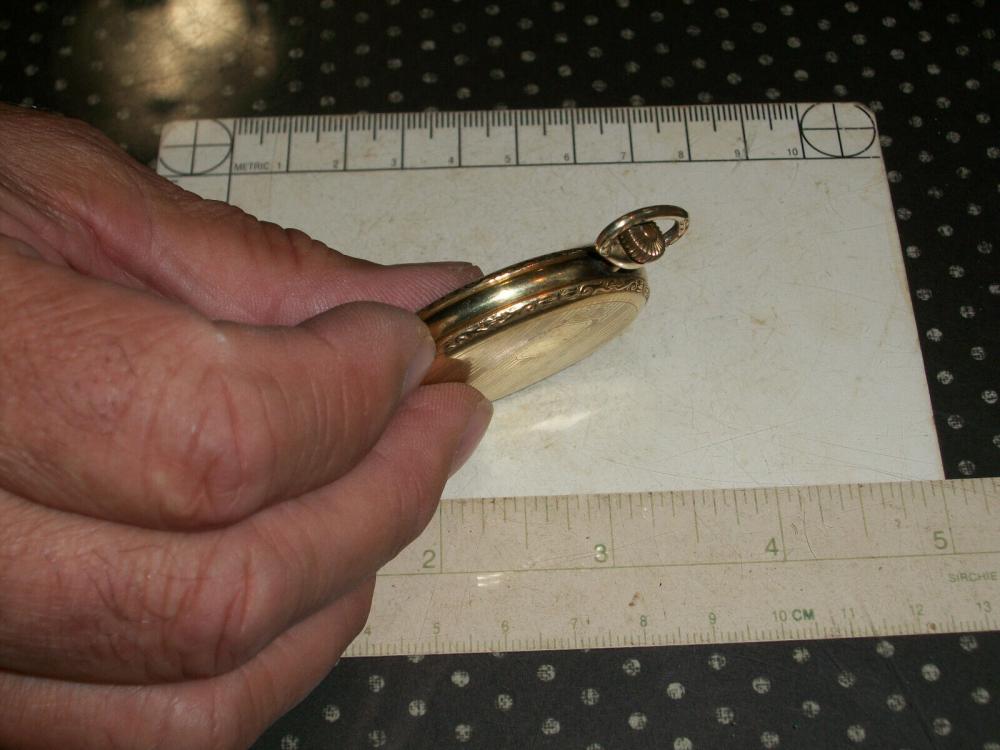Leaderboard
Popular Content
Showing content with the highest reputation on 09/02/22 in Posts
-
3 points
-
dynamic poising yes static poising? Static poising as with the balance wheel only no hairspring which means no regulator pins yes why would you need to poise a factory balance wheel that's already poised? With vintage watches that have gone through lots of hands then you definitely need to check the poise to see how creative past people were but on a modern balance wheel poising? More if you just really obsessed with things. Then of course as you pointed out you do need to make sure that you're not poising to fix other problems.3 points
-
This animated web page has a load of great information. Of course, Mark offers a series of online, self-paced instruction at https://www.watchfix.com/ that is quite good.3 points
-
I'm with Neverenoughwatches. As it's only $5 there's a learning/experimenting experience there. You could change the hand lume to black paint and make them more defined in the dark? I've a Lorus watch which is very similar to that, only cost a couple £'s and still running strong well over a year later. That has black hands. Have fun with it.2 points
-
Does that matter matey ? I have watches that i paid less than a quid for waiting to be repaired. Its all experience. The challenge of repairing a cheap watch is so much higher and imo as rewarding if not more so than something of quality. If you can do that and survive then you can repair more than you think and if it doesn't go well then you've had some cheap education that day.2 points
-
Ok guys since starting this post I have with the blessing and say so from my FBHI mentor started taking on paid work and started my own clock /pocket watch repair business, it runs along side my actual day job. i now mark my jobs with the initials of my company name the job number and the last two digits of the year. So that’s how I mark my jobs, so really I’ve just answered my initial question1 point
-
1 point
-
1 point
-
I dont really have anything 70s retro but I've been liking some of Andy's collection just latey. So i jumped in on some ebay bidding a few days ago and got this space age looking Timex. It needs a little work, some minor scratches on the glass which will dress out easily and the stem comes completely out so i may need to do some parts searching but apart from that it is good condition. The case body is chunky and you can feel the weight of it on your arm, a bit like a Magnum .44. So i gotta ask myself one question " do i feel lucky " well actually yes i do punk because i really like it.1 point
-
Thank you, Watchweasol and OH both, for confirming it to be a Hermle. I know a couple good places to get Hermle parts, and I know a clock technician personally who services mostly Black Forrest stuff and he stocks Hermle parts at his shop. So I won't be worrying about parts. And thanks to @oldhippy for the oiling tips; I'm going to try that. As to wear - I don't think there is very much. Aside from gunky old oil, the wheels look like they were just cut. Considering that when I opened the back, it had a sort of musty, old-house smell, and there were two cobwebs and a crumpled Beeman's gum wrapper in there, I think this clock has not been used in a few decades. I think it spent much of its recent life in an attic or cellar or some such. It sounds like horrible treatment, but all I can think is that someone must not have appreciated such a nice clock - digging it out of a long period of storage, only to donate it to a thrift shop. Ah well, their loss...my gain. I shall now have at least one more striking clock adding to the background noise of my little house. That is fine; it is a quieter clock than most.1 point
-
1 point
-
yes that seems reasonable but were talking about the Chinese is it reasonable to them? For instance what about the 1000 or the 1900 machine very popular timing machines. Where do they come from who makes them warranty support after sales repair anyone have any ideas? if you looking at the hardware-based machines the program for the 1000 and the 1900 are similar but there's variations especially in 1000 machine. So how many companies are making these how many companies have cloned these? then for instance I'm currently looking at aliexpress.com for yet that looks similar to yours but not exactly the same. I snipped out an image of the description now I'm not going go over every single point I find humorous will be here all day. But let's look at the key points designed for amateurs but it's a professional design. I do like the ceramic filter capacitors professional signal processing etc. etc. Somewhere in this discussion somebody had one of these and took it apart creative writing has occurred here. yes I'm really being nice when I say creative writing or there's a reference to the analytical software does it come with software? There's even a reference to an android cell phone I did know these worked on android cell phone? So yes somebody purchasing one of these will see the description of it looks impressive it's a great price and will probably show up in this discussion group asking how the heck do they use this thing. Because you not to get any support out of Chinese. despite what the description up there says of the electronics I'm assuming it's the same electronics we saw in the previous unit. It have to look at the lowest voltage the integrated circuit runs out and then you could tap in the USB power. Yes have to make sure that all the grounds are correct so don't end up with shorting something out or some other bizarre grounding issue. then as far as actually implementing this I'm already doing it. I really hate batteries so for my amplifier design which is different than this. I'm using a USB audio device and I'm just taking the 5 V power off the power my circuit seems to work quite nice but mine is different circuits of you blow your computer up tapping into the power I'm just warning it may not work in your case. Just a disclaimer here. did you notice how this is 3-D printed? a lot of times with 3-D printed stuff it comes from an open source somewhere. A lot of parts of the planet will have open source C are allowed to use it for a variety of reasons you can even modify it it's how things get improved and made better because people are modifying whatever exists. But typically the Chinese don't seem to operate that way because if we had the source files then we can look at improving the design. Oh and then there is one other problem. For those of us that understands or at least think we understand timing machines their incredibly useful devices but sometimes interpreting the results can be interesting. Any new person using a timing machine will find things confusing. Doesn't really matter whether it's a Chinese 1000 machine or a witschi several thousand dollar machine producing similar results will be confusing. Then sometimes interpreting the results of a timing machine isn't much different than trying to read a crystal ball and predict the future. in other words timing machine reading isn't always an exact science.1 point
-
These movements wear a lot because they are not made of really hard brass or steel. Its modern and modern is never as good at wear as really old brass and steel. As far as I know you can still buy parts for Hermle clocks. I always oiled the floating balance ends with pocket watch oil. Oil the escape wheel every other tooth not the pallet pins as the pallet pins will pick up the oil as the escape wheel rotates.1 point
-
The balance spring looks very similar to the spring on the Heetich that I am restoring.1 point
-
This is an amazing page. I have not had enough time to read through it but the modeling really took some time and effort. If the text is comes close to equaling those illustrations, this will prove to be a priceless educational tool. I have already sat down with my grandson and talked to him about the subject of gear ratios using this page. He hasn't got it yet but you can see that he will. Thanks so much from us all. And thank you grsnovi for bringing it to my attention. Shane1 point
-
You do realise that before you even think about poising, either statically or dynamically, you need to get the end-curve of the hairspring adjusted correctly, so it always sits exactly between the regulator pins with no power on the movement. So, when the regulator index is moved from both sides of extremity the regulator pins never touch the hairspring, if the end-curve isn't sorted then the regulator pins will either push or pull the hairspring depending on the position of the regulator index. If this isn't corrected, then putting the movement in vertical positions may emulate poising problems, which it isn't. I would be very surprised a smooth balance that has been balanced in the factory needs poising. They tend to be made of Glycudur, if it is a fairly modern movement. I've never had to poise a glycudur balance1 point
-
Hi Karl It may be stamped Hamilton But the movement is Hermle 340-020 probably a bought in movement. done a few of these they are nice clocks . Its an eight day Westminster chime movement with underslung hammers. the Floating balance is a nice feature and as long as its not maltreated in any way, very good. Cleaning and oiling the balance , when dry its recommended that you use Moebius 8000s but I have always used Windle's on the top and bottom of the tube carrying the wire. Its beat rate is 150 BPH. Never had one to bush as yet. For $35 a cracking buy. I did one for a friend some time back that he retrieved form the repairers after a 3 month wait and a quote for £300 plus.1 point
-
Just brought this home from a local thrift shop. In an effort to step out of my "comfort zone" of pocket watches, I saw this charming old Hamilton on a shelf, needing some TLC, and decided to buy it. It was only $35, so not too dear. Now, my knowledge of clocks is sparce, and is primarily mechanical - and related to function. I'm a little ignorant regarding striking clocks. This one seems of good quality and I am familiar with the Hamilton name. And it has a floating balance, and I am more used to working on balances than I am upon pendulums. All that said, if O.H. or any of the rest of you clock veterans have any tips or caveats, feel free to share. I am preparing to clean, and to locate my clock oil. And I plan to search the forum for wood refinishing posts, and how to tell if a clock needs bushings, and other fun stuff. Wish me luck.1 point
-
Hello Everyone. Just won this one. Elgin Antique American Gentleman's Pocket Watch Grade 303 Circa 1927 (#29296413). The practice movement I bought is from the same Grade and a reasonably close serial number (#23687805) so I hope to be able to make a working piece out of the two. Practice Movement: https://pocketwatchdatabase.com/search/result/elgin/23687805 Semi-Working Pocket Watch: https://pocketwatchdatabase.com/search/result/elgin/29296413 Here's the description: Wish me luck in this restoration! Does anyone have any tips for me? g. ----1 point
-
I had a look to see If I could find any numbers in service sheets for allowable differences between amplitudes - couldn't find any. I have an Omega Workshop Guide on "BASIC CHECKS AND SETTINGS OF A MECHANICAL WATCH" - the Amplitude tolerances are in WI 28 , which I don't have. On the website "Adjusting Vintage Watches" https://adjustingvintagewatches.com/dynamic-poising-3-vertical-rates/ Those are the sorts of numbers I'd expect, which suggests that 50 deg difference is OK.1 point
-
You can find the Timex service manuals that I am sharing here - https://drive.google.com/drive/folders/0B-IKHN7WFKiwY3JMMDJnMld2SE0?resourcekey=0-7myGNNAUiShb5ihA-o6PnA&usp=sharin Should get you started. Cheers!1 point
-
Afternoon, I have a Rotary Elite GS00959 which has a reversable movement. In effect, two movements back to back. I decided to do the battery change myself as I do all my others and the guy that used to do it has retired. He did talk me through the process but now I can't recall the first step. One of the stems needs to be remived but I can't recall which or how. Can anyone help? Thanks, Clive1 point




